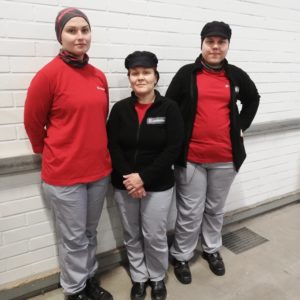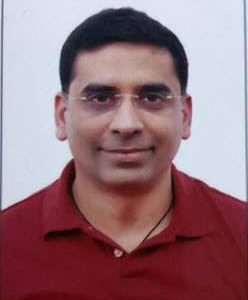Let us introduce you to how the circular economy affects our everyday business and how it is seen in our processes and on everybody’s desk.
We start our design process by looking at the end of the product lifecycle. We aim for emotionally durable designs that reduce waste by building relationships between users and products – designs that take into consideration different job titles, working environments and cultures.
Using resources efficiently is one of our top priorities. The key is producing only the needed textiles in just the right amount. Our carefully selected partners are committed to our standards, too. We choose durable fabrics and quality pieces to ensure our textiles are made to last.
To serve better, we have to be closer. We keep our transportation distances short with local service centers and use local transportation services. We optimize our routes to minimize emissions – transporting textiles and picking up laundry on the same run.

A finished product always has a lot of information collecting, sketching, fittings, testing and customer visits behind it. I hope that the workwear user feels that the piece is ergonomical, comfortable and practical, but also pleasing to the eye too.

High-quality workwear is very important in my job. It guarantees that no impurities contaminate the production line.

The best parts of my job are my friendly co-workers and varied tasks. I hope that the customers are happy with their clothes and the service they get.
We want our end-users to be and feel comfortable – so we test trial garments to ensure they fit the purpose and need. When the textile isn’t suitable for its original purpose anymore, we can reuse it in a different job function. In this way, we maximize the lifecycle of the textiles.
We care. That’s why we launder your overalls when they’re dirty, mend them when they tear and make alterations when needed. We think one step ahead as we collect data to further product and service development, which helps us make even more longlasting products with increased lifespans.
For our textiles, a new life starts when the old one ends. It’s only natural that old textiles are recycled as new fibers or as an energy source. New innovations are constantly developed and tested with our partners to make sure resources are used efficiently.

We have worked with Lindström for more than a year to find new solutions for textile waste. Our work is important as we provide alternate products with a unique value proposition. The best part about my job is being part of a unique sunrise industry.

It is more environment-friendly to repair clothes than to make new ones. I hope our service is convenient so that the customer can focus on their work.

I like that I get to see my hand’s work immediately. I hope the users feel that they are taken care of and they can trust that they always have the best workwear.
The cotton towel roll has lived and breathed circular economy practices for decades. During its lifespan, it is used and...
The article was originally published on Unicef.fi and adapted for our readers who prefer English. Few people know that...
When buying something, do you ever stop to think about the seller’s financial incentive? Is the company aiming to sell...
Lindström is appreciating customers around the world during the annual CX week. Let us take you back to the very...
Working together to reduce the environmental impact of workwear Seaweed as raw material for textiles? Fabrics dyed by bacteria? New...
The textile industry is one of the major contributors to the environmental problems in achieving sustainability targets. This is due...
Silver in the EcoVadis ratings Our continuous work towards more sustainable business has been recognised with EcoVadis Silver medal. According...
The Best Innovative Project Award – Lindström’s Workwear Flex The first ETSA awards in history were presented at the ETSA...
Efficient textile management to reduce the environmental footprint of healthcare Healthcare’s climate footprint is equivalent to 4.4% of global net...